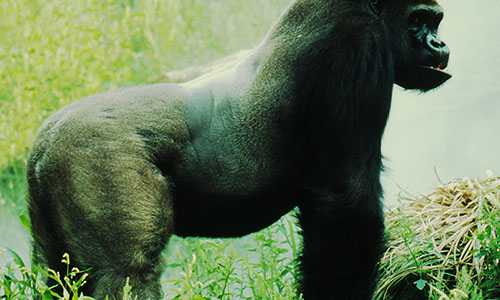Maiko National Park in Congo: Home to the Eastern Lowland Gorillas in DR Congo
Maiko National Park is a vast protected area located in the Democratic Republic of the Congo (DRC), nestled in one of the country’s most remote and rugged woodland regions. The park spans approximately 10,885 square kilometers (4,203 square miles), making it one of the largest parks in the country. Known as Parc national de la Maïko in French, it is divided into three sectors, which spread across the provinces of Nord Kivu, Province Orientale, and Maniema.
The park is a crucial sanctuary for some of the Congo’s most remarkable wildlife, including the Eastern Lowland Gorilla (also known as Grauer’s Gorilla), the elusive Okapi, and the Congo Peafowl. Maiko also plays a significant role in conserving endangered species such as the African Forest Elephant, the Eastern Chimpanzee, and the aquatic Genet, all of which contribute to its ecological importance.
Creation of Maiko National Park
Maiko’s origins as a protected area date back to 1949, when the Belgian colonial administration established the Bakumu Hunting Reserve. The name “Bakumu” refers to the indigenous tribe of the region, the Kumus. Initially, the reserve was created with the primary intention of preventing the exploitation of mineral resources rather than safeguarding the natural environment.
However, on November 20, 1970, under the leadership of President Joseph Désiré Mobutu, the Presidential Decree no. 70-312 came into effect. This decree formally declared Maiko National Park a protected nature conservation area and established the Institut Congolais pour la Conservation de la Nature (ICCN), a governmental body responsible for the park’s management.
Challenges Due to the Rebel Conflict
The remote and difficult-to-access nature of Maiko National Park made it an ideal hideout for the Simba rebels following their defeat in 1964. Since then, these rebels have resorted to illegal activities such as poaching and mining within the park, creating significant challenges for conservation efforts. The presence of the Simba rebels has persisted due to the lack of effective government oversight and the inability of authorities to enforce the 1970 decree.
This insecurity has made it extremely difficult for ICCN rangers to patrol and protect the park. The Congolese army’s attempts to suppress the rebel groups, including the Simba, have often resulted in direct confrontations, further destabilizing the region. Between 2003 and 2005, several survey teams were detained by rebel forces. In addition to the Simba, other rebel factions, including the Rwandan Interahamwe, have also been active in different sectors of the park, leaving ICCN with little control over the area.
International Conservation Efforts
The first comprehensive survey of Maiko National Park was conducted in 1989, led by the Wildlife Conservation Society (WCS) in collaboration with ICCN (then known as ZICN), with support from the World Bank, the European Community, and the World Wildlife Fund (WWF). This survey covered around 950 kilometers of the park, providing vital data on its biodiversity. WCS also surveyed the northern sector of the park in 2005.
In 2005, the Dian Fossey Gorilla Fund began conducting the first surveys of the park’s southern sector, uncovering a gorilla population larger than previously documented. This discovery marked a significant milestone in understanding the park’s ecological value.
In 2006, WCS expanded its surveys to include additional parts of the southern sector, reaffirming that Maiko is home to a wide variety of endangered species. Despite its critical status, the park remains a key repository of both common and rare species, emphasizing its importance for global biodiversity.
A more recent survey conducted in 2010 focused on the western and southern jungles of the park. The survey revealed that the threats to the park’s wildlife had intensified since the previous surveys, with increased poaching pressure and the use of firearms by miners. Tragically, it was reported that one of the new gorilla sub-populations identified in 2005 had been wiped out.
Efforts to Address the Rebel Issue
To address the ongoing threats posed by the rebels, a new approach to conservation was introduced. In 2010, Fauna & Flora International (FFI) began building health centers and schools in villages within the zone of influence of the rebels. This initiative aimed to create an alternative livelihood for the local population and reduce the reliance on illegal activities.
Additionally, the Frankfurt Zoological Society (FZS) launched a proactive project aimed at engaging former rebels in conservation efforts. This project involved enlisting former Simba rebels as park rangers, offering them a path to social reintegration. This initiative has shown promise in not only reducing the rebel presence but also fostering a sense of responsibility for the park’s preservation.
In conclusion, while Maiko National Park faces numerous challenges due to its remote location and the ongoing rebel activity, international efforts and innovative conservation strategies are providing hope for its future. The park’s rich biodiversity, including rare and endangered species, underscores the importance of continued protection and management to ensure the survival of its ecosystems.

